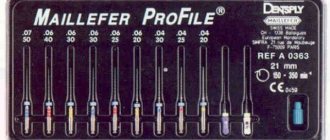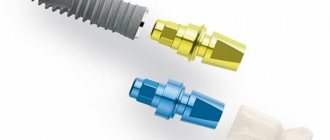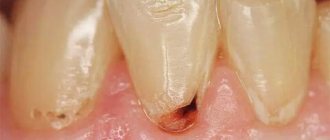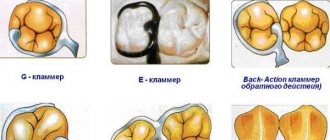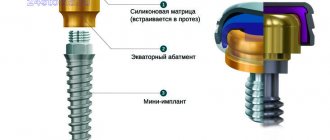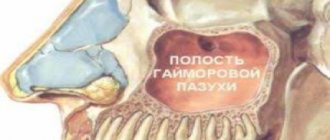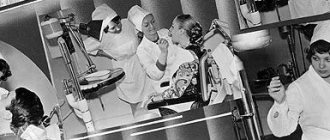Author: Brodsky Sergey Evgenievich Deputy Chief Physician, Candidate of Medical Sciences in the specialties: dentistry and medical microbiology Techniques for tooth extraction depend on the number of its roots, the clinical situation and surgical instruments. You can learn about how the process of tooth extraction occurs in this article.
- What instruments are used to remove teeth?
- How does the tooth extraction process work?
- How is a complex tooth extraction performed?
- When is complex tooth extraction required?
What instruments are used to remove teeth?
Depending on the clinical situation, the instruments used to remove teeth may be needed in different combinations, or the doctor may be content with just one.
1) Tooth extraction forceps
- There are forceps for removing upper and lower, front and back teeth. In addition, there are so-called universal (button) dental forceps for extracting any tooth. For third molars, which are displaced towards the tongue or cheek during eruption, there are special forceps for removing wisdom teeth, which allow you to very tightly cover the crown part of the eighth teeth. There are also special root forceps for removing only one root from the bone tissue.
Deputy Chief physician Sergey Evgenievich Brodsky
Sign up for a free consultation
+7
2) Elevators for dental extraction
- This type of tool is made in the form of a sharpened screwdriver with a groove, with which you can pick up and dislocate a tooth or a separate tooth root. There are a great many options and types of dental elevators. For wisdom teeth, there is a special elevator, the so-called “Lecluse Key,” which facilitates the dislocation of eighth teeth that are tightly seated in the jaw.
Types of forceps
The instrument is used to extract teeth using the lever principle. Its main parts are: handle, lock and cheeks. With the help of the last section, the coronal part of the element to be removed from the oral cavity is fixed. The doctor holds the instrument by the handle and rotates it in the required direction. The lock is part of the connection between the cheeks and the handle. To remove different types of units, separate types of forceps are used, differing in design features and sizes.
Forceps for extracting units on the lower jaw
The following types of forceps are used in the process of removing lower teeth:
- Beak-shaped. Designed to remove units with intact coronal part. The cheeks in these instruments are located at an angle of 90 degrees to the handle. The cheeks can be either converging or non-converging.
- To remove wisdom teeth. They have curved cheeks that can penetrate hard-to-reach areas of the row.
Beak-shaped forceps for removing teeth on the lower jaw.
Forceps for removing teeth on the upper jaw
There are several types of tools for extracting the upper elements:
- Bayonet or universal. With their help, you can eliminate almost any affected unit of the upper jaw. Depending on the width of the cheeks, instruments are divided into narrow, medium and wide. The axes of the handles and cheeks of bayonet-shaped pliers are parallel to each other.
- Direct. Designed to eliminate milk units or elements located in the front. The working part of the tools and their handle are located on the same line.
- S-shaped. Necessary for extraction of chewing units of the upper jaw. The cheeks of the forceps do not touch each other. There are several types of the instrument in question: left-handed and right-handed. One part of the cheek has a rounded shape, the second ends with a spike.
- To remove top eights. The cheeks and handle of the tool are located on the same axis. Both cheeks are rounded at the ends, and their inner part has indentations. This design ensures convenient penetration of the forceps into the oral cavity. During extraction of the upper eights, there is no damage to the lower wisdom teeth.
Elevators
Main structural elements: working part, handle, connecting rod. Depending on the width of the working part, all tools are divided into wide, medium and narrow. The devices also differ in the principle of operation - from themselves and from themselves.
There is a groove on one side of the working part of the elevators, and a convex part on the other. And also instruments are divided into straight and convex. The first type of device is used to remove single-root elements or to separate the roots of multi-root units from above and below. Angled structures are used to remove teeth whose roots have not been preserved.
The tooth is removed using an elevator using the lever principle. During the operation, the surgeon holds the alveolar process with the thumb and index finger of his left hand, and with his right hand he inserts the elevator into the periodontal space, which becomes larger under the influence of the instrument. During manipulation, the periodontal fibers of the affected element are torn.
The elevator is inserted with rotational movements to a depth of 4–6 mm. Thanks to the efforts made by the dentist, the tooth is squeezed out of the alveolus. Similar manipulations are carried out to remove semi-retracted (partially exposed to the surface of the gum) and retracted (located in the thickness of the gum) elements.
A chisel or bur is used to remove the upper or lower front incisors, after which the dentist uses instruments to extract the roots. The remains of the root system are removed using narrow tweezers (for the upper jaw) or an angular elevator (for elements of the lower row).
How does the tooth extraction process work?
The process of tooth extraction proceeds according to the following scheme:
- Pain relief with local anesthesia;
- Selection of tools for dental extraction (elevator and/or forceps);
- Applying forceps or an elevator to the tooth being removed;
- Rocking or dislocation of the “sentenced to be removed”;
- Extracting a tooth from the jaw socket;
- Toilet (care and protection) of the surgical wound left after tooth extraction.
In this scheme, there may be additional stages when, before tooth extraction, a lot of the root tooth is first sawed and pulled out of the bone socket in parts. This option is required for crooked and twisted roots.
Possible complications after tooth extraction
In some cases, tissue healing after tooth extraction does not occur correctly, or an infection is observed. In this situation, we talk about complications after surgery. They are indicated by severe pain, great swelling, and elevated temperature. If pathogenic microflora gets into the wound, then bad breath and purulent discharge may also appear. The listed symptoms may indicate a cyst or fistula.
A common complication after tooth extraction is alveolitis. This condition is accompanied by a dry socket, that is, the absence of a blood clot. The main sign of pathology is quite severe pain. Alveolitis is most often diagnosed in women taking contraceptives and in people who smoke.
The development of complications after tooth extraction is often a consequence of neglecting the doctor’s recommendations. In addition, the reason may be related to poorly performed manipulation or low qualifications of the doctor. That is why it is always important to contact experienced specialists who master modern techniques and cope well with even the most complex and extraordinary cases.
come back
How is a complex tooth extraction performed?
Options for non-standard tooth extraction are required in different clinical situations. The most common option is the difficult removal of the eighth tooth, especially when it has not fully erupted or is generally lying and completely immured in the jaw.
The most commonly used method for complex tooth extraction is:
- Conducting anesthesia;
- Creating access to the tooth to be removed, dissecting the mucous membrane and periosteum, forming an evacuation window in the bone tissue of the jaw, in which the unerupted (impacted) tooth is hidden;
- Extracting a tooth from the jaw using an elevator;
- Toilet of the surgical wound, including treatment with furatsilin and rinsing with hydrogen peroxide, filling the voids from under the extracted complex tooth with bone powder, applying a membrane and suturing the gums;
- Prescription of anti-inflammatory therapy.
What care is required after tooth extraction?
Regardless of whether you had a simple or complex tooth extraction, such a situation requires monitoring your well-being and the wound surface on the gum. First of all, this concerns the proper healing of the hole. Ideally, a blood clot should form in it, which indicates that healing is proceeding without problems. It is for this purpose that the doctor immediately after the procedure places a gauze swab into the resulting cavity. It must be kept in the indicated place without removing it for 20-30 minutes, and only after that can it be removed. If the hole has formed correctly, then in a couple of days it will be covered with epithelium, and after a couple of months new bone tissue will appear in its place.
In order not to interfere with the proper healing of the wound, you must follow the following recommendations:
- Do not rinse your mouth for a couple of days or use a toothbrush in the area where the tooth was removed;
- For the first time after the procedure, avoid hot drinks and food;
- do not take a hot shower or bath for 2-3 days after tooth extraction;
- for the first few hours, completely abstain from food and drinks;
- Until the wound heals completely, try to chew on the other side of your mouth.
Many people experience swelling in the area where the tooth was removed, which can last for several days. To make it less pronounced, it is recommended to apply ice to the cheek after the procedure. Minor pain and low-grade fever may also be a concern. This is considered normal, and to alleviate the condition, the doctor prescribes painkillers. He may also prescribe an antibiotic if in a particular case he considers its use justified. In such a situation, it is extremely important to undergo a full course of treatment in strict accordance with the doctor’s recommendations.
When is complex tooth extraction required?
Clinical situations in dentistry when tooth extraction is considered difficult are:
- Tooth with a cyst;
- Dystopic or impacted wisdom tooth;
- Fistula in the projection of the tooth;
- Removal of premolars in the treatment of malocclusion;
- Removal of baby teeth in children;
- Abnormally crooked roots directed in different directions.
To successfully remove complex teeth, in each individual case, the dental surgeon can use a combination of different tools and methods that are most suitable for successfully extracting teeth and roots from the jaw.
Just CALL US!
+7
We will answer any of your questions and will definitely help you!
What are the indications for tooth extraction?
Tooth extraction in dentistry is always a last resort procedure. Doctors make every effort to save the tooth or at least part of it, but in some cases extraction cannot be avoided. We are talking about many conditions.
- Chronic periodontitis, which is in the acute stage. As a rule, if the inflammatory process continues to recur, it is recommended to remove the tooth to prevent further spread of the infection.
- Very strong and deep carious lesion of the tooth.
- Odontogenic osteomyelitis, which usually develops as a complication of infection and is characterized by damage to bone tissue.
- The tooth constantly injures soft tissues. This happens especially often if the tooth is in an incorrect position. Permanent trauma is very dangerous, therefore, if the problem cannot be solved in another way, removal is recommended.
- Fracture of a tooth root or any other mechanical damage.
- Late stages of periodontitis, when the teeth begin to become very loose.
- An impacted tooth that cannot erupt and is covered on top by gum tissue. Most often this happens with wisdom teeth.
- Carrying out orthopedic treatment or prosthetics that cannot be done without removing one or more teeth.
Why are complex teeth treated at PARTNER-MED?
We know how to work!
We have orthopedic dentists with 8-30 years of experience!
We love to work!
We will give you a free consultation and tell you exactly how best to make your teeth better!
We are responsible for the result!
We work conscientiously and will make your teeth LIKE YOURSELF!
Request a call back or dial our number!
+7
This phone call does not obligate you to anything. Just give us a chance and we will help you!
Just pick up the phone and call us!
+7
We will definitely make you an offer that you cannot refuse!
Orthopedic crown remover
Typically, a crown remover is used when the crown is not held tightly or if some manipulations have already been carried out to remove it. The crown remover consists of a handle, a middle part represented by a rod with a groove for the working part, and, in fact, the working part.
If the structure is fixed well, then crown removers with a spring mechanism are used - in particular, Kopp's crown remover or, as dentists call it for short, cop. This type of crown remover, due to the spring, produces a single strong blow, which allows you to remove even a well-fixed crown. But at the same time, it is precisely due to the force when removing the structure that ceramics can become damaged and it will no longer be possible to fix it again.
To prevent the structure from chipping, there is another option - a manual crown remover, in which a weight is used instead of a spring - it is less powerful, but when used, there is a greater chance of keeping the structure intact.
